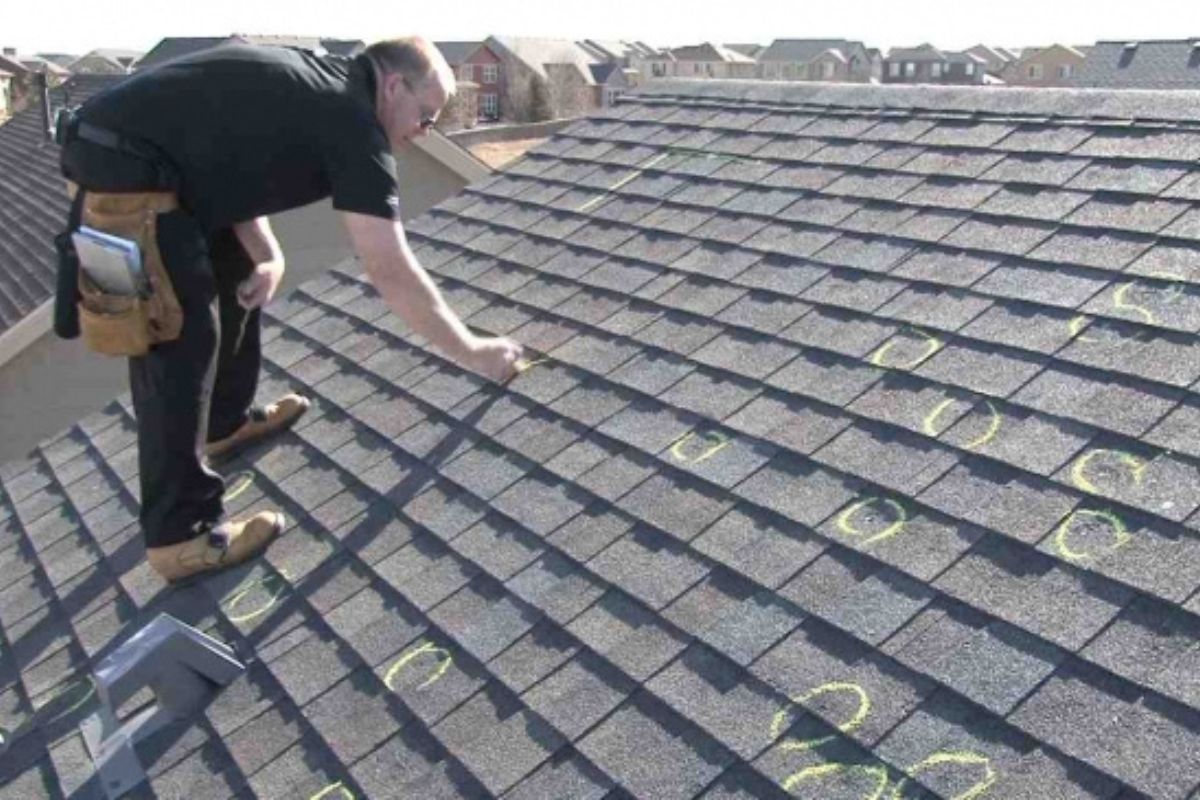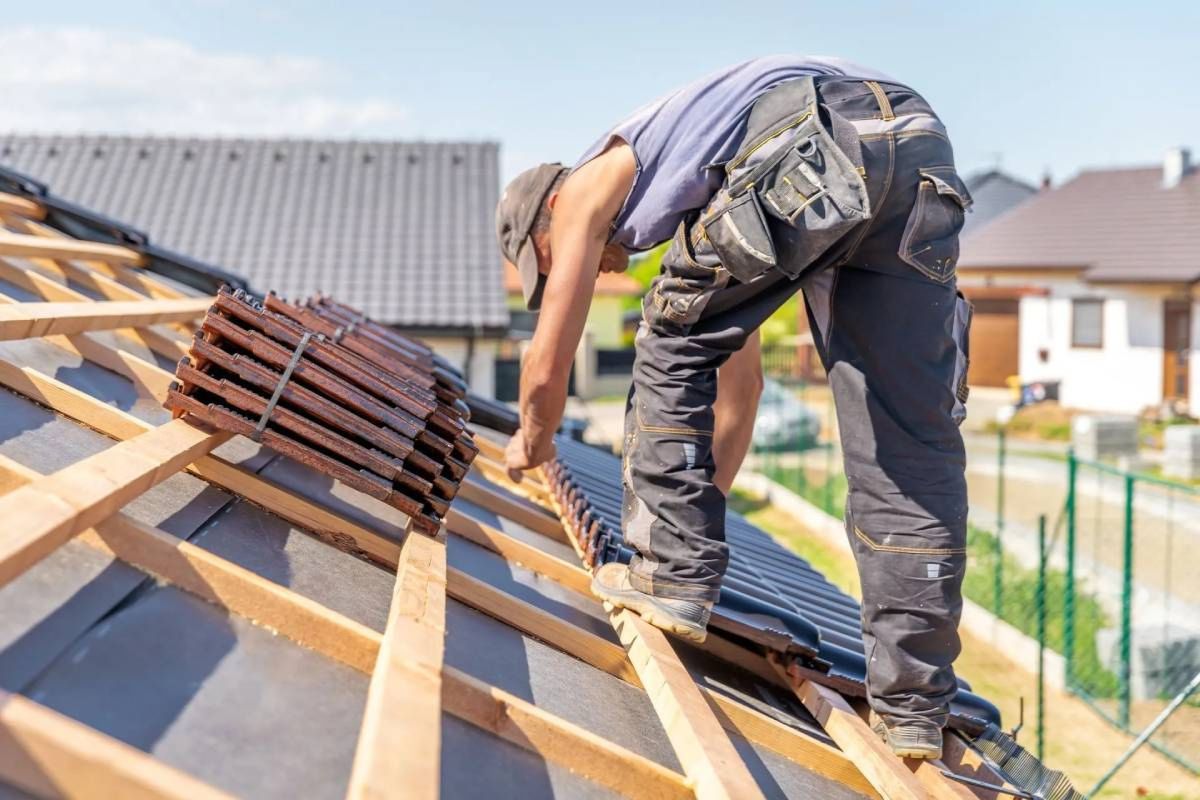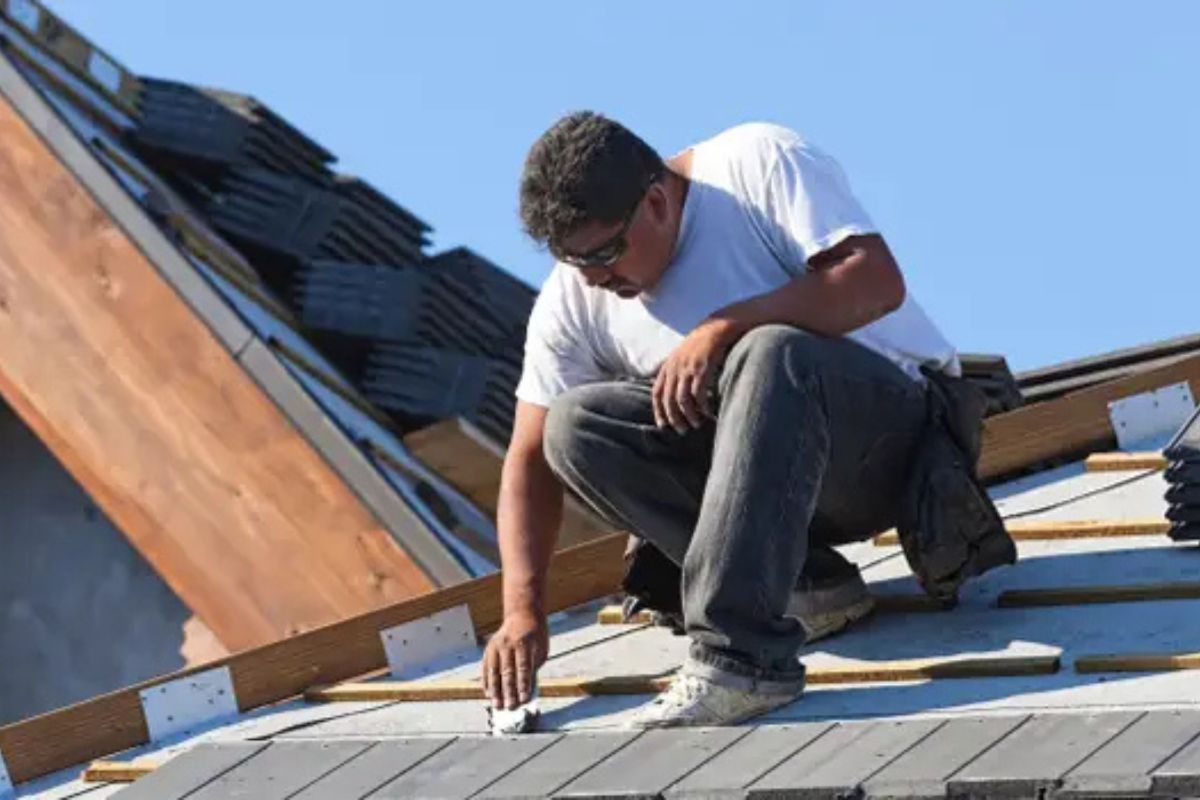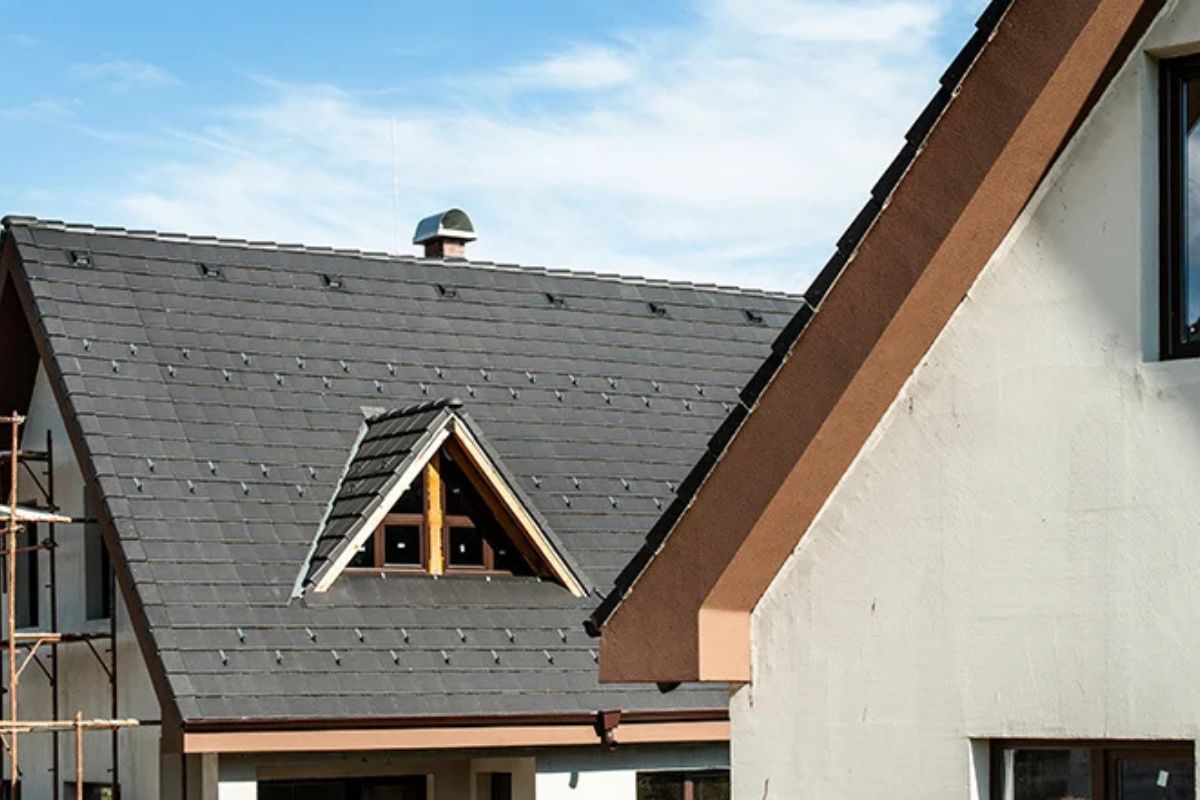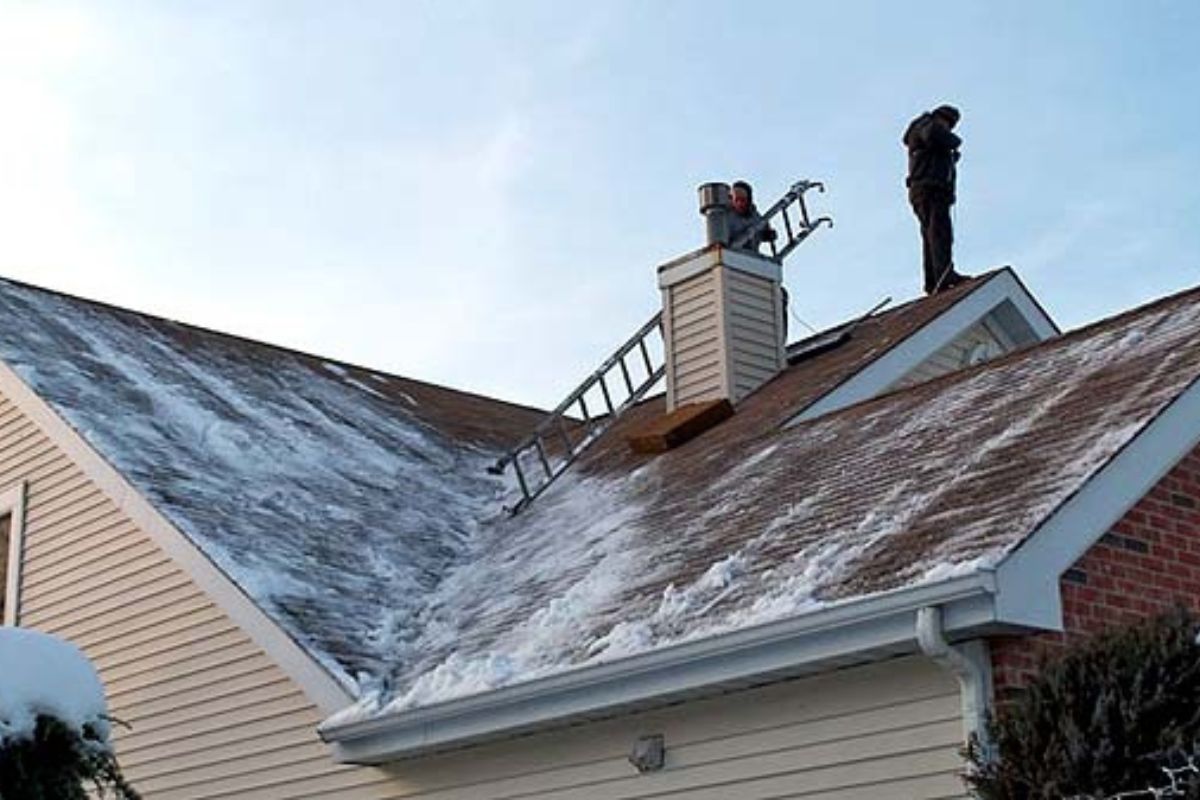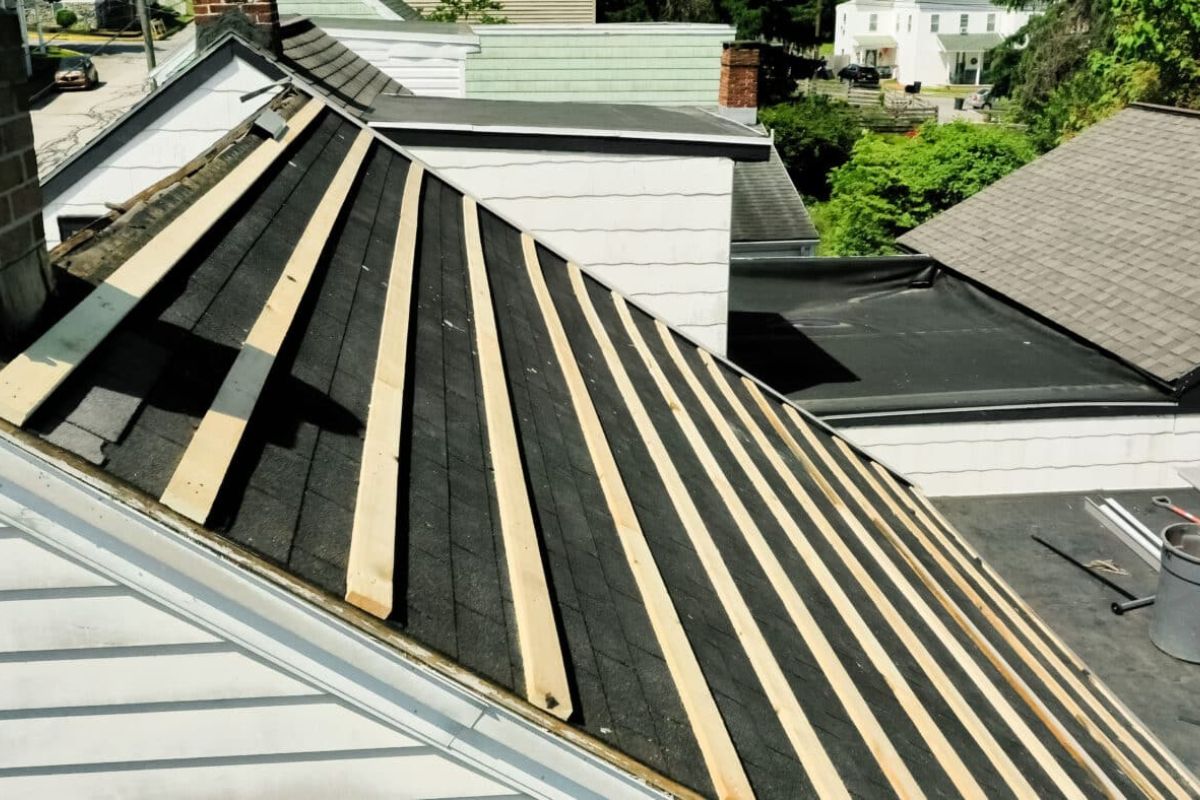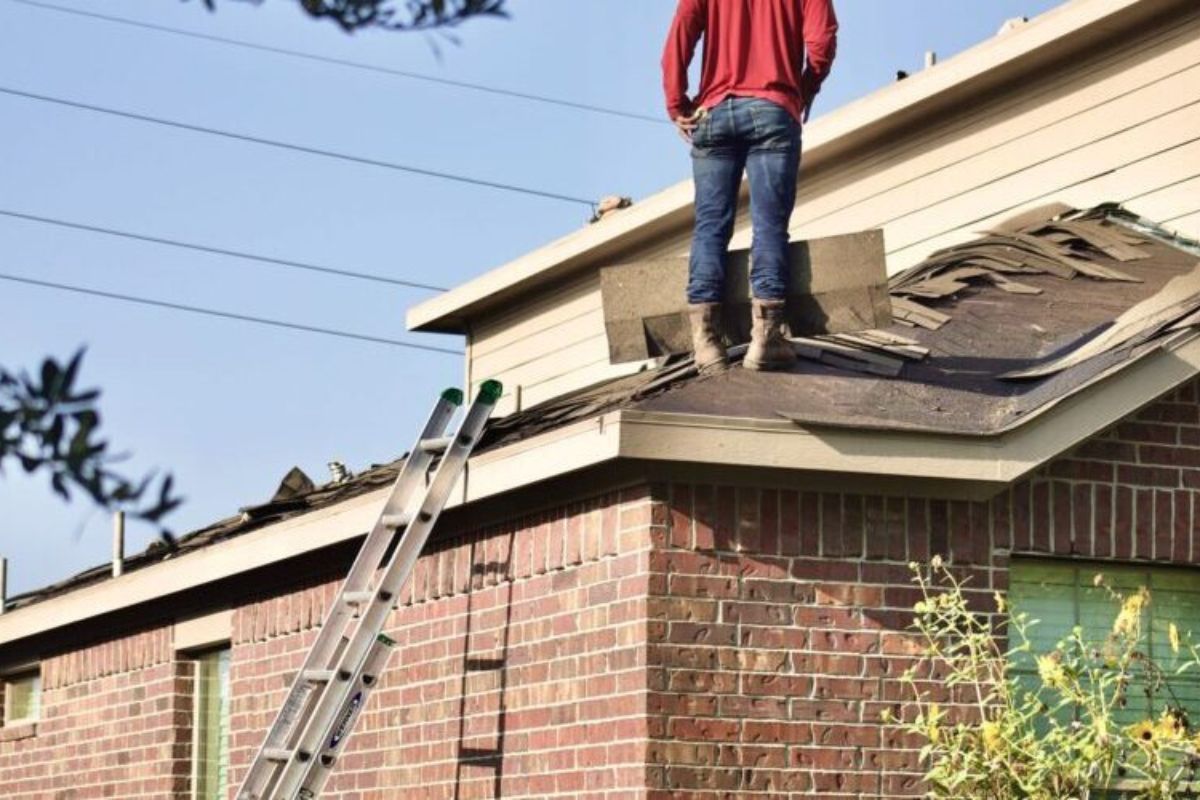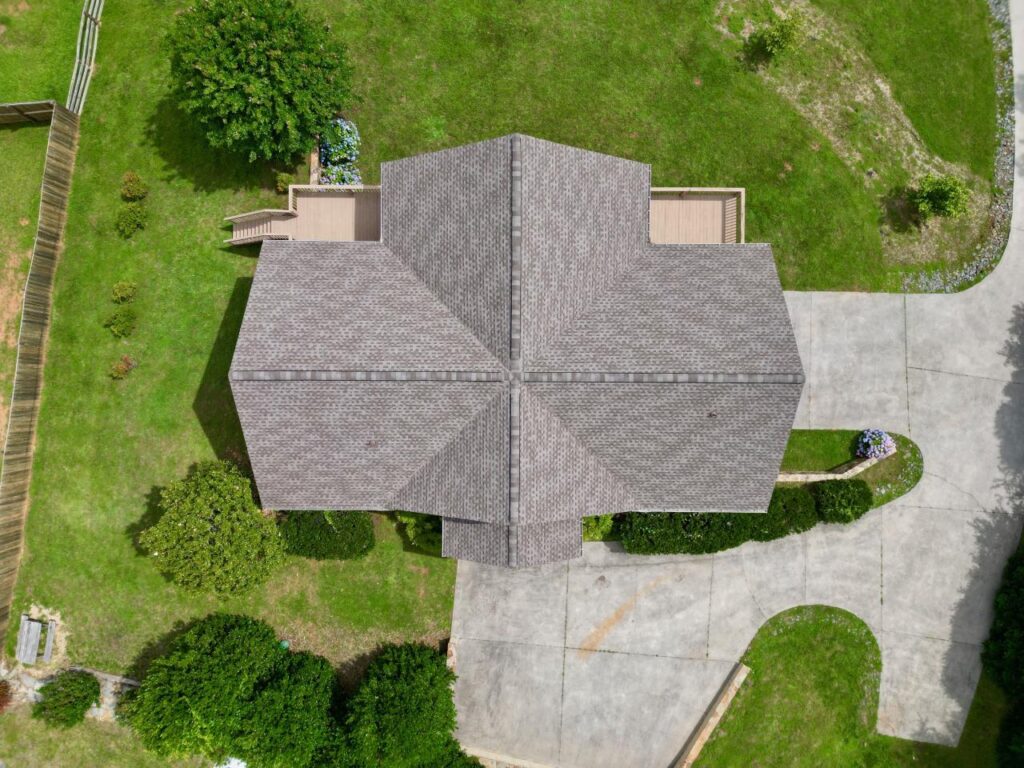Home inspectors check for roof damage through visual examination from ground level, ladder access, and interior inspection of attics and ceilings. They look for missing shingles, water stains, structural problems, and ventilation issues during standard home inspections.
This complete guide explains inspector methods, damage signs, and when professional roof specialists provide better results.
What Methods Do Home Inspectors Use to Check Roofs?
Home inspectors use ground-level observation, ladder inspection, and interior examination to check roof damage. Most inspectors avoid walking on roofs due to safety standards from InterNACHI and ASHI organizations.
Ground-Level Visual Inspection
Inspectors start by walking around the property exterior. They use binoculars to examine roof details from safe distances. This method identifies 70% of visible roof problems without safety risks. Ground inspection reveals missing or damaged shingles, gutters and downspouts condition, chimney and flashing issues, roof slope and alignment problems, and moss or algae accumulation.
Ladder-Based Examination
Inspectors use ladders to examine roof edges and gutters closely. Ladder inspection provides detailed views of materials, fasteners, and drainage systems. This method shows shingle layer count, gutter attachment quality, roof edge condition, flashing details around penetrations, and fastener placement quality.
Interior Damage Assessment
Interior inspection often reveals roof problems invisible from outside. Inspectors check attics, ceilings, and walls for water damage signs. Interior inspection finds water stains on ceilings, mold growth in attics, insulation damage, structural beam problems, and ventilation system issues.
What Signs of Roof Damage Do Inspectors Look For?
Inspectors look for water damage, material deterioration, and structural problems as primary roof damage indicators. Water stains, missing shingles, and sagging areas signal immediate repair needs.
Water Damage Indicators
Water damage creates visible signs inside and outside homes. Inspectors check multiple areas for moisture problems. Common water damage signs include dark ceiling stains, peeling paint near roof lines, musty odors in attics, wet or compressed insulation, and rust on metal components.
Material Deterioration
Roof materials deteriorate over time from weather exposure. Inspectors examine shingles, flashing, and gutters for wear patterns. Material problems include curled or cracked shingles, granule loss on asphalt shingles, damaged or missing flashing, corroded gutters and downspouts, and loose or missing fasteners.
Structural Issues
Structural problems affect roof stability and safety. Inspectors check for sagging, cracking, and support beam damage. Structural damage signs include sagging roof lines, cracked or split rafters, uneven roof surfaces, damaged support beams, and separation at roof joints.
How Do Home Inspectors Access Different Roof Areas?
Home inspectors access roof areas through ground observation, ladder positioning, and interior entry points. Safety standards limit actual roof walking to low-slope, stable conditions.
Roof Walking Limitations
Home inspectors avoid walking on roofs steeper than 6/12 pitch. Weather conditions, roof materials, and structural integrity determine walking safety. Roof walking restrictions include steep slopes over 6/12 pitch, wet or icy conditions, damaged or unstable materials, brittle tiles or slate, and safety hazard presence.
Alternative Access Methods
Inspectors use alternative methods when roof walking poses risks. These methods provide detailed roof examination without safety concerns. Alternative inspection methods include drone photography and video, telescopic cameras, thermal imaging equipment, binocular examination, and ladder-based viewing.
What Areas of the Roof Do Inspectors Examine?
Inspectors examine roof surfaces, penetrations, edges, and drainage systems during standard inspections. Each area requires specific attention for different damage types.
Roof Surface Examination
Roof surfaces receive the most weather exposure and show damage first. Inspectors check materials, fasteners, and wear patterns. Surface inspection covers shingle condition across all slopes, material attachment quality, wear pattern identification, damage from weather events, and moss or algae growth areas. Understanding various home roofing choices helps homeowners prepare for potential replacement needs.
Penetration Points
Roof penetrations create potential leak sources. Inspectors examine seals, flashing, and connections around pipes, vents, and chimneys. Penetration inspection includes chimney flashing and seals, vent pipe boots and collars, skylight frames and seals, antenna or satellite attachments, and HVAC equipment connections.
Drainage System Assessment
Proper drainage prevents water damage and structural problems. Inspectors check gutters, downspouts, and drainage patterns. Drainage system review includes gutter attachment and slope, downspout placement and flow, drainage away from foundation, water backup signs, and ice dam formation areas.
What Interior Signs Indicate Roof Problems?
Interior signs like water stains, mold growth, and insulation damage indicate roof problems requiring immediate attention. These signs often appear before exterior damage becomes visible.
Attic Inspection Focus
Attics reveal roof problems through water damage, ventilation issues, and structural changes. Inspectors spend significant time examining attic conditions. Attic inspection reveals water stains on decking, mold growth on surfaces, damaged or wet insulation, structural beam problems, and ventilation system issues.
Ceiling and Wall Damage
Interior ceilings and walls show water damage patterns from roof leaks. Inspectors trace stains to identify leak sources. Interior damage patterns include brown or yellow ceiling stains, peeling paint or wallpaper, soft spots in drywall, visible mold growth, and musty odors in rooms.
When Should You Get Professional Roof Inspections?
Professional roof inspections provide detailed analysis beyond basic home inspections for insurance claims, major repairs, and property transactions. Roofing specialists offer specialized knowledge and equipment.
Insurance Claim Requirements
Insurance companies require professional roof inspections for damage claims. Licensed inspectors provide detailed reports meeting insurance standards. Insurance inspection needs include storm damage assessment, claim documentation requirements, repair cost estimates, code compliance verification, and warranty claim support.
Real Estate Transaction Support
Real estate transactions benefit from professional roof inspections. Detailed reports help buyers and sellers make informed decisions. Real estate inspection value includes accurate condition assessment, repair cost estimates, lifespan predictions, negotiation support, and risk identification. For homeowners considering new residential construction, professional roof inspections help plan proper materials and installation methods.
How Much Do Roof Inspections Cost?
Roof inspection costs range from $125 to $571, with an average cost of $331 for standard residential inspections. Specialized inspections like drone or infrared cost $150 to $600. Many homeowners explore financing options for major roof projects when inspections reveal significant damage.
Standard Inspection Pricing
Standard roof inspections include visual examination, basic documentation, and condition reports. Pricing varies by region and roof complexity. Cost factors include roof size and complexity, access difficulty, material types, inspector qualifications, and regional labor rates.
Specialized Inspection Costs
Specialized inspections use advanced equipment and provide detailed analysis. These inspections cost more but offer comprehensive damage assessment.
Specialized inspection pricing:
- Drone inspections: $150-$400
- Infrared inspections: $400-$600
What Are the Limitations of Home Inspector Roof Checks?
Home inspectors provide basic roof assessment but lack specialized roofing knowledge and equipment for detailed damage analysis. Professional roofers offer deeper expertise and comprehensive inspection methods.
Knowledge Limitations
Home inspectors receive general training covering multiple building systems. Roofing specialists focus exclusively on roof systems, materials, and repair methods. Inspector limitations include limited roofing material knowledge, basic repair understanding, general damage assessment, standard reporting formats, and time constraints during inspections. For comprehensive evaluation, businesses often require commercial roofing specialists with advanced expertise.
Equipment Restrictions
Home inspectors use basic tools for roof examination. Specialized equipment provides more detailed damage detection and analysis. Equipment differences include basic ladders vs. specialized access equipment, standard cameras vs. thermal imaging, visual inspection vs. moisture detection, general tools vs. specialized instruments, and basic reports vs. detailed documentation.
How Do You Prepare for a Roof Inspection?
Prepare for roof inspections by clearing access areas, gathering documentation, and scheduling during appropriate weather conditions. Proper preparation improves inspection quality and safety.
Access Preparation
Clear access areas allow inspectors to examine all roof areas safely. Remove obstacles and provide adequate lighting for interior inspection. Preparation steps include clearing attic access areas, removing stored items from attics, providing adequate lighting, trimming overhanging tree branches, and clearing walkways around house.
Documentation Gathering
Collect roof-related documents to help inspectors understand roof history and current conditions. Documentation improves inspection accuracy. Helpful documents include previous inspection reports, repair receipts and warranties, insurance claim history, roof installation records, and maintenance documentation.
What Happens After a Roof Inspection?
After roof inspections, you receive detailed reports with findings, recommendations, and repair priorities for informed decision-making. Reports include photographs, damage descriptions, and cost estimates.
Report Contents
Inspection reports document all findings with photographs and detailed descriptions. Reports help prioritize repairs and plan maintenance. Report sections include executive summary of findings, detailed damage descriptions, photographic evidence, repair recommendations, and cost estimates and timelines.
Next Steps Planning
Use inspection reports to plan repairs, contact specialists, and make informed decisions about roof maintenance or replacement. Action steps include prioritizing urgent repairs, getting contractor quotes, filing insurance claims, planning maintenance schedules, and budgeting for future work. Reviewing completed project examples helps homeowners understand quality workmanship standards.
Professional roof inspection services in Georgia provide comprehensive analysis and expert recommendations. Ridgeline Roofing Company offers detailed inspections and quality repair services for residential and commercial properties. Their team specializes in complete residential roof replacement projects with superior craftsmanship.
Regular roof inspections prevent costly damage and extend roof lifespan. Schedule professional inspections annually or after severe weather events to maintain roof integrity and protect your property investment.

